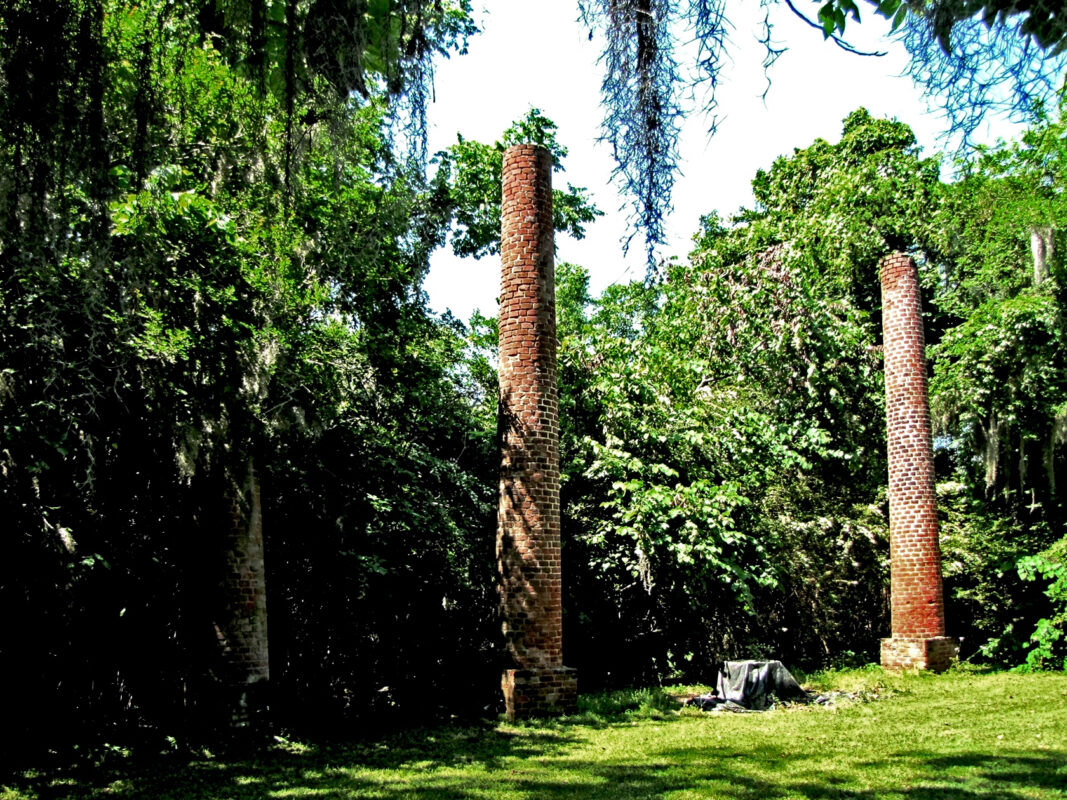Hidden deep in the heart of Alabama lies a forgotten gem, where the moss-draped oaks whisper stories of long-lost souls and timeworn ruins stand watch over secrets buried by history. Welcome to Old Cahawba Plantation, a place that’s equal parts historical marvel and paranormal playground. For history buffs, it offers a rare glimpse into Alabama’s antebellum past. For ghost hunters, well… let’s just say you’ll want to bring your EVP recorders and nerves of steel. If you’re intrigued by places where the veil between the past and present feels thin, then Old Cahawba should be high on your must-visit list.
The History
The Rise of Old Cahawba Plantation
Old Cahawba Plantation sits near the ruins of Cahawba (also spelled Cahaba), the first permanent state capital of Alabama, nestled at the confluence of the Alabama and Cahaba Rivers. In the early 1800s, this area was booming with ambition. Designated in 1819 as Alabama’s first capital, the nearby town of Cahawba rapidly grew in size and political significance. Plantations sprouted in its vicinity, among them the once-thriving Old Cahawba Plantation.
Rich with fertile soil and access to river routes, the plantation became a prominent site for cotton farming. Its economic success was built, as with many Southern plantations of the time, on the painful exploitation of enslaved African Americans. The mansion on the plantation was grand, and the grounds included various outbuildings, cabins, and sprawling cotton fields. This success, however, would not last forever.
Decline after the Capital’s Move
The town of Cahawba lost its capital status in 1826 when political disputes and frequent flooding led lawmakers to move the capital to Tuscaloosa. Without its political pull, the town — and in turn, surrounding plantations like Old Cahawba — began to decline. It became a ghost town long before the term was trendy, with buildings rotting away and nature reclaiming the land.
The Civil War further accelerated this decline. Cahawba’s old warehouses were converted into Confederate prisons that held Union soldiers in famously inhumane conditions. While the Old Cahawba Plantation itself wasn’t officially designated as a prison, its proximity to the suffering marked the area with sorrow. Post-war poverty and harsh environmental conditions spelled the end for this once-promising region.
The Legacy Preserved
Today, the site of Old Cahawba Plantation is managed as part of the Old Cahawba Archaeological Park. Visitors can explore the picturesque, often eerie grounds, where remnants of the past include crumbling brick columns, family cemeteries, and silent footpaths. The stark beauty and historic weight of this location offer a poignant experience — perfect for those who seek both education and exploration.
The Haunt
Ghostly Presences and Stories from the Locals
For paranormal enthusiasts, Old Cahawba Plantation is a dream — or perhaps a nightmare — come true. Numerous reports of ghostly activity have emerged from those brave enough to walk its haunted grounds. Locals tell of strange lights hovering over the old dirt roads and ghostly figures in the mist just after the sun slips below the horizon.
The Lady in White
One of the most frequently cited apparitions is the Lady in White, said to walk silently among the forgotten headstones of the plantation family cemetery. Witnesses claim she is dressed in Victorian-era garb and seems to be searching for something — or someone. Some believe she is the spirit of a plantation owner’s wife, lost in mourning after the death of her child during a fever outbreak.
The Phantom Prisoners
Though the plantation wasn’t officially the site of the Civil War-era Castle Morgan prison, eerie encounters suggest otherwise. Visitors have reported the muffled echoes of voices begging for water, the ghostly sound of chains rattling through the night, and shadowy figures drifting aimlessly through the woods. Are these merely echoes of nearby Castle Morgan or something more sinister?
Poltergeist-Like Activity
Several paranormal investigators have recorded unexplained EMF spikes and sudden battery drainage near what used to be the old slave quarters. One group claimed that their audio recorders picked up what sounded like hymns — ancient spirituals sung in haunting tones, only to vanish on playback. Objects have been said to move on their own, and cold spots are frequently recorded even in the heat of Alabama’s summer.
Ghost Tours and Investigations
The state park occasionally hosts historical ghost tours that walk through both the plantation area and the nearby town ruins, combining storytelling, folklore, and a bit of theatrical drama. However, serious ghost hunters can request access during off-hours for investigations, usually in coordination with park staff. Don’t forget to bring permission letters, equipment, and respect — both for the park regulations and the spirits you might meet.
Why You Should Visit
If you’re someone who loves peeling back layers of forgotten history and communing with lingering spirits, Old Cahawba Plantation will not disappoint. It’s a destination where Southern Gothic meets real historical significance, offering an unmatched combination of intrigue, mystery, and a chilling sense of presence.
Whether you’re a seasoned paranormal investigator or just a curious traveler looking to connect with Alabama’s past, this ghost town’s haunted remnants are sure to leave a lasting impression. Bring your cameras, your EMF detectors, and an open mind — because at Old Cahawba, the past lives on in more ways than one.
Tip: Visit during twilight hours for maximum atmospheric effect. And maybe, just maybe, you’ll catch a glimpse of the Lady in White or hear the sorrowful hymns echoing through the pines.
History is never truly dead — and in places like Old Cahawba Plantation, it walks beside you.

